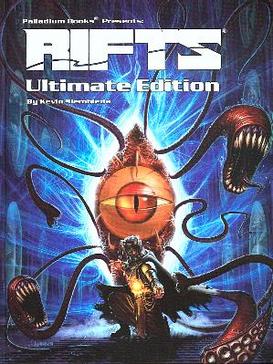
Rifts is a multi-genre role-playing game created by Kevin Siembieda in August 1990 and published continuously by Palladium Books since then. It takes place in a post-apocalyptic future, deriving elements from cyberpunk, science fiction, fantasy, horror, western, mythology and many other genres.
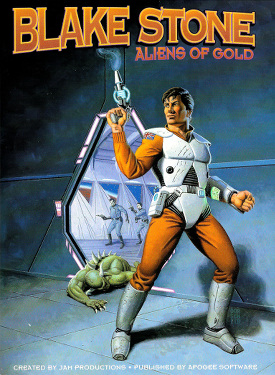
Blake Stone: Aliens of Gold is a first-person shooter for DOS created by JAM Productions and published by Apogee Software on December 5, 1993. The following year, a sequel called Blake Stone: Planet Strike was released, which continues where Aliens of Gold leaves off. Some copies of the game provided a Command Control Gravis Gamepad.

The Combine are a fictional multidimensional alien empire which serve as the primary antagonistic force in the 2004 video game Half-Life 2 and its subsequent episodes developed and published by Valve Corporation. The Combine consist of organic, synthetic, and heavily mechanized elements. They are encountered throughout Half-Life 2, Half-Life 2: Episode One, and Half-Life 2: Episode Two, as well as Half-Life: Alyx, as hostile non-player characters as the player progresses through the games in an effort to overthrow the Combine occupation of Earth.

Solar Winds: The Escape and its sequel Solar Winds: Galaxy are top-down, space-themed role-playing action games developed by James Schmalz and published by Epic MegaGames in 1993.
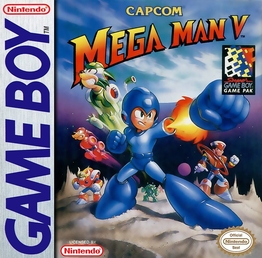
Mega Man V is a video game published by Capcom for the Game Boy handheld game console. It is the fifth game in the Game Boy version of the original Mega Man series. The game follows the adventures of the protagonist Mega Man as he must defend the Earth from a group of powerful robots from outer space called the Stardroids. Mega Man V is unique among the Game Boy Mega Man games as it features original bosses rather than recycling those from the Nintendo Entertainment System (NES) Mega Man games.

Chimera Beast is an unreleased coin-operated arcade video game developed by C.P. Brain and planned to be released by Jaleco in 1993. It is a scrolling shooter with primarily horizontal movement.
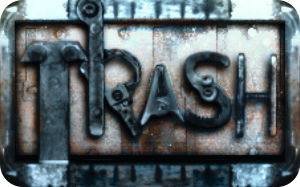
Trash is a 2005 real-time strategy game developed by Inhuman Games. It was released on September 20, 2005, for Windows.

Duke Nukem: Zero Hour is a 1999 third-person shooter game in the Duke Nukem series, developed by Eurocom and published by GT Interactive for the Nintendo 64. The game uses a relatively large 32 megabyte cartridge and can also use the Expansion Pak to improve graphics, though this slows down the frame rate. It features a 4-player split-screen multiplayer mode that uses a first-person view.

Alien Soldier is a side-scrolling run and gun video game developed by Treasure and published by Sega for the Mega Drive. Retail copies were released in Japan and PAL territories while in North America it was only available exclusively via the Sega Channel cable service. The story follows a powerful being named Epsilon-Eagle, who after being nearly killed becomes determined to avenge his near death and save his planet. The character has a variety of weapons and moves that the player must master to complete the game. Many gameplay ideas are borrowed from Treasure's earlier Mega Drive release, Gunstar Heroes (1993). However, Alien Soldier puts an emphasis on challenging boss fights with short and easy levels serving as downtime in-between.
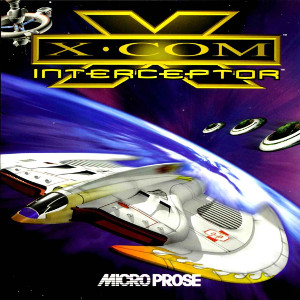
X-COM: Interceptor is the fourth main game in the X-COM series, developed by MicroProse's Chapel Hill development studio and released in 1998. The game is a combination of many genres, including space flight simulation, business simulation game and strategy game elements. More specifically, the player's role includes managing a number of X-COM space stations, piloting starfighters during hostile encounters whilst co-ordinating wingmen, and managing resources and research. X-COM Interceptor, although released as the fourth game, is actually set before X-COM: Apocalypse, thus making it the third game in the chronological order. The game was re-released in 2008 for Steam and GamersGate, and again in 2016 on GOG.com.

Xexex, released as Orius in North America, is a 1991 side-scrolling shoot 'em up arcade game by Konami. It draws on Irem's R-Type and Konami's other shoot 'em up Gradius, while adding the tentacle mechanics of Irem's other shoot 'em up XMultiply. In the game, players take control of the Flintlock space fighter in a mission to rescue Princess Irene La Tias of Planet E-Square, who has been captured by the evil galactic warlord Klaus Pachelbel.
StarWraith is a series of space combat simulators by StarWraith 3D Games.

Home Alone is the title of several tie-in video games based on the 1990 film of the same name written by John Hughes. Versions were released for the Nintendo Entertainment System, Game Boy, Super Nintendo Entertainment System, Master System, Sega Genesis, Game Gear, Amiga, and MS-DOS platforms. The games were released between 1991 and 1992, each with different gameplay.

Supreme Commander: Forged Alliance is a stand-alone real-time strategy video game released at the end of October, 2007 as the expansion to Supreme Commander. The second title in the franchise, it was similarly developed by Gas Powered Games and published by THQ.

Alien Siege is a 2005 Sci-Fi Channel Original Movie about an alien race that comes to Earth seeking a cure to a deadly virus, for which the antidote is human blood.

Ben 10: Omniverse is an action video game based on the American animated series of the same name. The game was published by D3 Publisher in North America and Namco Bandai Games in Europe and Australia. It was released in November 2012 for PlayStation 3, Xbox 360, Nintendo DS, Nintendo 3DS, Wii, and Wii U.
Obduction is an adventure video game developed by Cyan Worlds. Obduction is considered a spiritual successor to Cyan's previous adventure games, Myst and Riven. In the game, the player finds their character transported to strange alien worlds but with human elements within the settings. The player must explore and solve puzzles to figure out how to return home.

Radix: Beyond the Void is a 2.5D first-person shooter developed by Canadian studio Neural Storm Entertainment and published by Epic MegaGames for MS-DOS in 1995.

The Battle Cats is a free-to-play tower defense video game developed and published by PONOS Corporation for iOS and Android, originally released in Japan under the name Nyanko Great War. The Battle Cats debuted on the Japanese iOS App Store in November 2012 under the name Battle cats, with Android support following in December of that same year, and became popular in both Japan and Korea. It later was deleted from both the US Google Play stores and App Store, with an improved version released on 17 September 2014. A Microsoft Windows port was released in August 2017, and was available for download until late 2018, when PONOS Corporation ended support for it. It was ported to the Nintendo 3DS in 2016 and Nintendo Switch in Japan in 2018 and Southeast Asia in 2021.

















